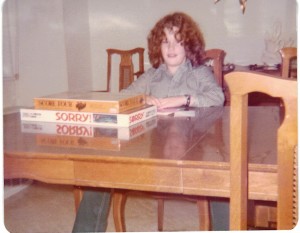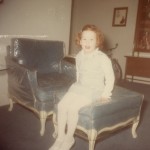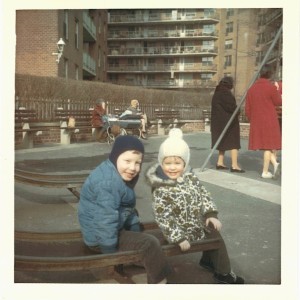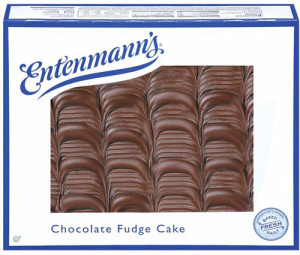As the days of school wound down in June, every kid in the neighborhood would gear up for a visit to the closest thing the neighborhood had to real suburban living…The Park City Pool Club. The pool club was owned and operated by a management company that owned several apartment buildings in the Park City portfolio. Practically everyone I knew during grade school lived in a Park City building and many lived in the management company’s “crown jewel,” Park City Estates, a mega-apartment complex with five high-rise buildings that at the time could have rivaled anything Donald Trump built. While the club was designed for residents of those buildings, people from neighboring buildings could join and the kids of Saxon Hall were well represented at Park City pool, simply known by the locals as “the pool.”
The pool was situated about two stories above ground and was surrounded by other Park City buildings. From 10 am until 3 pm, the sun reflected off the “so hot you could fry an egg on it” concrete floor surrounding the pool and from 3 pm on, the surrounding buildings created a wind tunnel effect; a perfect storm that would send all the cabana umbrellas and chaise lounge mats flying.
In addition to making money from memberships, the pool generated revenue by renting cabanas and daily lounge chairs. The sunning area was stocked with wooden lounge chairs with thick wheels that resembled Fred Flintstone’s car and were just as difficult to roll. The lounges offered another opportunity to enjoy yet another splinter or two in the ass and they were unbearable to lie on unless you purchased the comfy plastic mat to place over them. Or unless you were ten years old and didn’t have the two bucks to purchase the cushion. And besides, it’s not like we spent that much time out of the water anyway.
The only thing that kept us out of the water was food. Everyone’s mother would warn them that if they ate food, they had to wait 40 minutes before going back in the pool; otherwise they would get a wicked cramp and drown. This nonsense had reached urban legend proportions and someone always had a ridiculous story about some kid who ate a raisin, jumped in the water seconds afterwards, and died. But no one wanted to “test the waters” so to speak. We all waited the 40 minutes.
While we did have suntan lotion back then, there was no such thing as Sunblock 2, 4, 6, 15, and 30. The choices were suntan lotion or baby oil and both were a poor choice for someone like me who had a skin tone that resembled Elmer’s Glue. I was taught to always wear sunblock, but I might as well have been lathering my skin with mayonnaise because no matter how much I used, I left the pool every time resembling the tomato that would have gone so well with the mayonnaise. Cha-Cha on the other hand, had beautiful Mediterranean skin. She’d put on some Hawaiian Tropic and proclaim, “Come on sun; tan me wild” and it would. She also brought lemons to the pool and squeezed the juice in her hair in hopes of lightening it while sun bathing. It worked and none of the boys seemed to be deterred by all the lemon pits in her hair.
And speaking of boys, my recollection of boys in bathing suits is that they all wore the same one; a blue Speedo with a white stripe down the side. No one wore long trunks or board shorts; occasionally a boy would show up in jean shorts as a make-shift bathing suit, but every other boy was stuck with that Speedo which called way too much attention to their pre-pubescent junk and probably kept them in therapy for decades afterwards.
The pool itself was a 40′ X 80′ deep blue paradise for a kid. There was also a kiddie pool for non-swimmers, but there was no greater motivation for learning how to swim than being able to avoid this outdoor urinal. The main pool started at 3 feet and was over 9 feet at its deepest point. There was a spiral sliding pond where kids would line up to show off their latest dare devil stunts….going down the slide head first, lying on your back, legs over the sides, sideways, sliding down standing, groups of kids linked together like a train sliding together…You name it. With the exception of hurling your body off the top of the slide and on to the concrete, everything seemed fair game and the lifeguards didn’t blow the whistle nearly as much as they should have.
There was a similar scene by the diving boards. The pool had two boards in the 9 ft. area that were parallel to each other and you could get away with doing almost anything off the diving boards. One board was very low and very bouncy. We would see how much splash we could make by jumping high and getting the board to touch the water. The other board was higher with less give but it was better for more complicated dives. Some kids could do back dives, flips, double flips, half gainers, cutaways, and hand stand dives. Others stuck to cannonballs and when they were feeling particularly adventurous they attempted one leg cannonballs (while holding their nose). I could do a decent jack knife. I finally learned how to do a flip after a full summer of landing on my face and my stomach and realizing there were perhaps safer ways of impressing the boy I was trying to gain attention from. You know the one…he wore a blue Speedo.
When I wasn’t busy attempting flips and smashing my face into the water, I was perfecting my regular dives. We would take turns diving and giving each person a critique with a verbal instant replay…too much splash, toes not pointed, legs bent, crooked. Our critiques were brutal, but honest and they made us better divers.
When we wanted to mix things up a bit, we’d concoct new ideas for doing something stupid and dangerous off the board. Someone came up with the ingenious idea of having a diver stand on each of the two boards and then dive towards each other; one going under and one going over the other. We did this when the lifeguard known for being more interested in his tan than kid’s safety was on duty. Another stunt was the double bounce. In the double bounce, two people stood on the same board and the person in the back mirrored their steps towards the edge of the board. When the diver took their bounce, their shadow would bounce as well, giving them twice the momentum and sending them flying through the air. When the timing was right, the double bounce was awesome. When your shadow messed up, you ended up with a bad dive, wise cracks from your friends, and usually a trip over to the narcissistic lifeguard for a Band-Aid.
The end of the pool with the diving boards never had any sun. Ever. The lines for the diving board were long, especially in the late afternoon. But nobody cared. You would stand shivering, plotting your next dive, giving commentary on others, and laughing with blue lips, goose bumps, and boy bumps.



